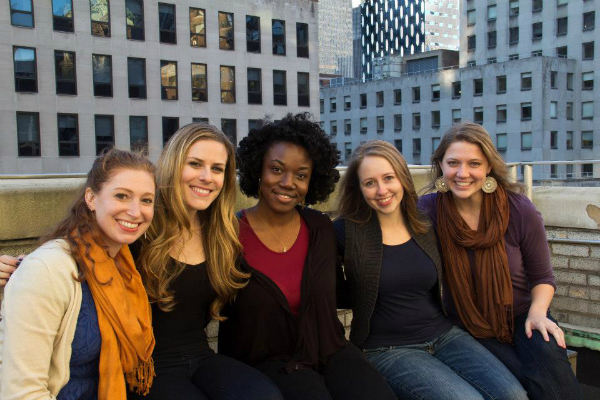Why an all-woman film team is marketing gold—and what that says about the industry

This is a guest post by Katie Maul.
I’m co-producing a film with a team of four smart, innovative, creative professionals, who are, yes, all women. Take the time you need to applaud, throw your fist in the air and share this article on your social pages.
Being a female in the male-driven world of film often elicits instant praise: “Good for you! The industry needs women like you!” which opens the door for us to respond with, “Yes! Let me tell you all about our documentary, Trichster!” The problem is—because Hollywood is well-known for having an astonishing lack of females—this is without having ever seen or heard about our work; we’re just what the industry needs (having lady parts and all). We are proud to represent the growing number of women in the independent film industry and gladly share the story of our team, but we’d prefer the focus to be on our work.

Our film, Trichster, follows seven people living with trichotillomania, a disorder that causes them to pull out their own hair. According to the Trichotillomania Learning Center, the little known disorder is “estimated to affect one to three percent of the population,” and “by adulthood, 80-90 percent of reported cases are women.” As a direct result, our audience and cast reflect those percentages, and our growing fan base is largely female. Touting our all-woman creative team is a perfect way to reach and expand that audience and our rare case of an all-woman team is marketing gold.

As team-appointed “marketing strategist” for the film, this is not lost on me, and it’s why with every pitch, synopsis, interview or discussion about the film, the phrase “all-woman creative team” is brought up and is often the main focus. Interest is piqued at the mention of our collective gender and gives us access to apply for specialized grants, media/blog coverage, and mentorship programs and groups. “Five females producing their first film” is not only pleasing alliteration, but the inclusion of “female” automatically boosts our appeal and makes us “different and interesting.” It opens doors and opportunities to collaborate with other women trying to break into the industry and gives us VIP access to women-only events and workshops.
It’s great marketing for us, but it’s a sad reflection on the industry as a whole. The slowly expanding crack in the glass ceiling of filmmaking still hasn’t cleared enough women to come remotely close to evening out the playing field, so it’s no wonder that an all-woman team is news. The problem is: It shouldn’t be. We shouldn’t get attention for something as basic as our gender—we didn’t have to do anything to be born with vaginas. Somehow, the fact that we were simultaneously helps and hurts us in the film world. We are an anomaly, which is great for marketing opportunities, but not so great for our prospects in an industry where that anomaly exists.

Dr. Martha M. Lauzen’s study, The Celluloid Ceiling: Behind-the-Scenes Employment of Women on the Top 250 Films of 2013, shows that 16 percent of key behind-the-scenes positions of the top grossing 250 U.S. films were filled by women in 2013— that’s down 2 percent from 2012. Only 6 percent of last year’s directors from those films were women (another disappointing decline from the previous year). The numbers don’t lie; the off-balance industry is extremely one-sided when it comes to gender. The need for specialized grants, mentorship programs and organizations that support and encourage female filmmakers is real—and it’s infuriating. Don’t get me wrong, these groups should be commended on their persistent efforts and the advancements they’ve made to shatter that “celluloid ceiling,” but I have a feeling they would all agree that their necessary existence is maddening. An all-woman team shouldn’t be surprising or noteworthy; it shouldn’t be anything more than trivial information about the film, but, here, in 2014, our team is a pioneering anomaly. We will gladly do our part and continue to stand up for female filmmakers as we storm our way into the industry. And we will produce a film that will make the industry and those trying to break into it proud.

Katie Maul is Co-Producer and Cinematographer on Trichster, a documentary about seven people living with the little-known disorder, trichotillomania. She works full time as Marketing Strategist and Content Producer at Critical Mention, a media monitoring company. Katie pursues freelance projects on nights and weekends as an editor, producer, and videographer.
